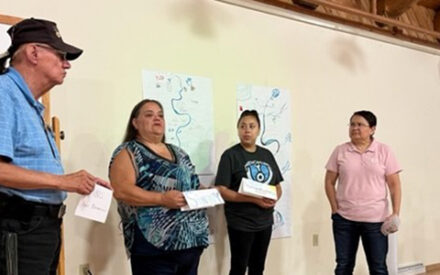End of life planning can be an intimidating process. It can also be confusing and emotional, which may explain why only 37% of Americans have completed Advance Care Directives. In 2018, UW Health indicated that out of 41,000 patients, only 40% of those 65 and older had completed Advance Directives, and of those 85 and older, only 63% had one. In a 2018 needs assessment, Extension educators throughout Wisconsin indicated a need for educational programs targeted to older adults who are about to or have lost a spouse or partner. Many were women who reported they had little experience managing money and had to learn new skills and make difficult decisions at a time when their lives had been upended by the loss of a loved one. Communities report increased requests for public assistance among older adults who are newly living alone, putting a strain on local budgets.
Proactive planning for end-of-life decisions and care can prevent these financial and emotional burdens. In response to this need, a team of Extension educators, program managers, and state specialists developed a program series called Planning AHEAD (standing for “Advance directives, Handling financial changes, Estate planning and Arriving at Decisions for the end of this life”). Planning AHEAD features seven modules: an introductory “Getting Started” overview followed by six content modules covering Advance Directives; Handling Financial Changes; Estate and inheritance planning; Choices in end-of-life care; End-of-life decisions (e.g. burial, cremation); and Understanding and dealing with grief. The curriculum and materials were finalized in Spring 2021. Once complete, Extension educators facilitated six pilot series across Wisconsin collecting extensive evaluation through end-of-session surveys, post series surveys, three focus groups and five follow-up interviews. The Planning AHEAD workbook was also reviewed and evaluated by the Wisconsin Network for Research Support’s Community Advisors on Research Design and Support group of older African American adults. This feedback informed adjustments to the curriculum before launching the program series broadly.
Since the program was launched in 2021, Extension has facilitated 32 program series across the state reaching more than 400 people. Currently, there are 25 county-based educators trained to facilitate the program series.
Initial feedback from community partners showed a need for this programming within the Hmong community, but as written, the content did not align with the Hmong culture and values. A partnership between Extension and the UW–Madison School of Nursing was formed and underwent a two-and-a-half-year long process to adapt the program to meet the needs of Hmong community members. This process included immersing eight Hmong students into their communities to teach core elements of the program to 35 participants. After each session the students conducted an interview to solicit feedback on the content, informing the adaptations.
‘Never too early to plan ahead’
Program evaluation has shown promising results of impact and behavior change leading to the increase in end-of-life planning among participants. Of the participants that responded to the end of series survey:
- 99% learned enough to move forward with end-of-life planning.
- 89% feel more confident having conversations with loved ones about end-of-life wishes.
- 93% know where to find reliable resources for more information on end-of-life planning.
- 100% said that they would tell a friend or family member about something they learned during the program.
When asked what specific goals they would like to work on during three months following the program series, the top four selections were: update end-of-life planning forms, make end-of-life wishes known, make a will or trust, and encourage someone else to do end-of-life programming.
During the follow-up evaluation:
- 69% of participants indicated that they communicated at least one aspect of their end-of-life wishes with someone.
- 68% indicated that they followed through with gathering documentation for planning or had completed documents on end-of-life-planning.
- Prior to the series only 16% of participants were in an active or maintenance stage of end-of-life planning and 60% indicated that they were in one of those stages after completing the series.
End-of-life planning can be difficult to think about and even more difficult to discuss with others. This program allows participants to learn about the end-of-life planning process, as well as learn from other participants that share their experience. Here are some of the comments participants made about the program:
- “Taking the class prompted me to work on organizing information on a week to week basis. Don’t know if I would have actually sat down on my own to get this done.”
- “Sometimes it is good to get a little nudge in the right direction. We tend to think there is plenty of time. This program emphasized that it is never too early to plan ahead.”
- “This program provided lots of information, great resources with the various checklists (especially on where to start); I have already had multiple discussions with others sharing information about difficult discussions that most have not thought about. This was a great program and I would definitely encourage others to enroll.”
Download Article

 Depth-to-Bedrock: Updated Mapping & Decision-Making
Depth-to-Bedrock: Updated Mapping & Decision-Making Building High-Quality Programs to Help Youth Thrive
Building High-Quality Programs to Help Youth Thrive Nature’s Navigators: Supporting Neurodiverse Learners
Nature’s Navigators: Supporting Neurodiverse Learners Centering Culture & Language in Leadership Programs
Centering Culture & Language in Leadership Programs


